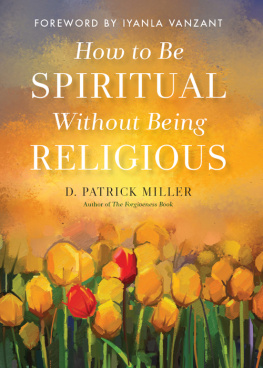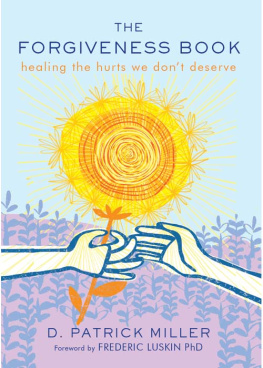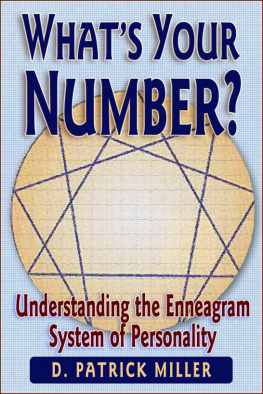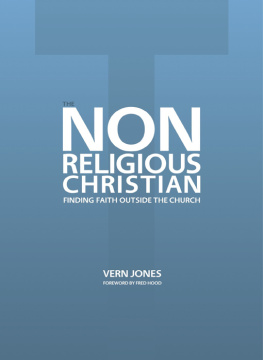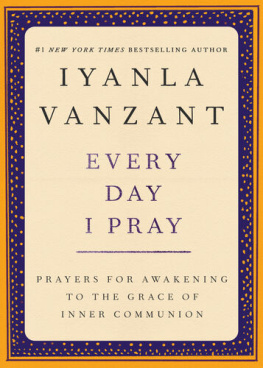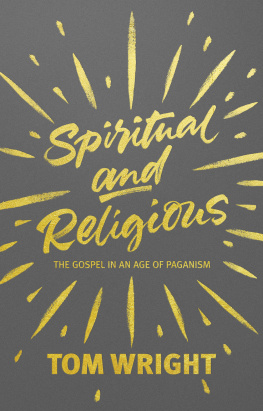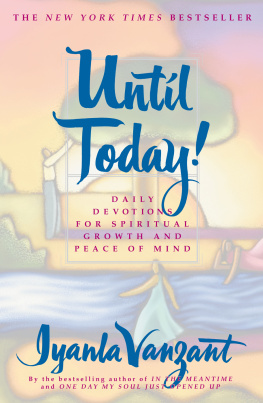

Copyright 2018
by D. Patrick Miller
Foreword copyright 2018 by Iyanla Vanzant
All rights reserved. No part of this publication may be reproduced or transmitted in any form or by any means, electronic or mechanical, including photocopying, recording, or by any information storage and retrieval system, without permission in writing from Red Wheel/Weiser, LLC. Reviewers may quote brief passages. Previously published in 1995 as The Book of Practical Faith by Henry Holt, ISBN: 978-0805041798.
Cover design by Laura Beers
Interior by Timm Bryson, em em design LLC
Typeset in 14 point Fournier MT
Hampton Roads Publishing Company, Inc.
Charlottesville, VA 22906
Distributed by Red Wheel/Weiser, LLC
www.redwheelweiser.com
Sign up for our newsletter and special offers by going to www.redwheelweiser.com/newsletter.
ISBN: 978-1-57174-842-3
Library of Congress Control Number: 2018954572
Printed in Canada
MAR
10 9 8 7 6 5 4 3 2 1
CONTENTS
FOREWORD
In 1999, a small book came across my desk from a source that is still unknown to me. It was The Book of Practical Faith by D. Patrick Miller. After glancing through the first three pages, I closed my office door, armed myself with multi-colored highlighters and whipped through the rest of the book in about two hours. A week later, every member of my staff had a copy, and an executive order to read it. Within days, the ten members of the faculty of the Inner Visions Institute for Spiritual Development had the same responseperfect! You see, at the time we were developing the curriculum for a Spiritual Life Coaching Program that is now eighteen years old. Every student that graduated from the program for the first ten years has read the book. Many of them still quote it at will.
Now retitled How to Be Spiritual Without Being Religious, this remains a spirit-filled, God-ordained work. It speaks to so many common issues and some of the most frequently asked questions that arise as one begins or endeavors to deepen their spiritual awareness and connection. Patrick's writing is so clear and heartfelt that it is hard to believe that he did not write the book for youwhoever you are, and wherever you may be on your journey. Having read the original book at least twenty times, I continue to appreciate three qualities of Patrick's writing that are absolutely essential for spiritual teaching. First, his writing is clear. There are no foo-foo terms or mystical lingo. Each word is carefully selected and eloquently placed so that it speaks to your mind and heart simultaneously. Second, the book is perfectly aligned with spiritual law and principle, although he brilliantly never mentions these things by name. To do so, in my assessment, would probably create confusion, sending the reader off to find more information that they would probably never use. Finally, Patrick writes as if he were speaking to an old friend, over a cup of tea, about things he has lived and experienced. His wisdom oozes through the pages, converting even the most dubious doubter into a believer of what he shares.
I have never laid eyes on Patrick Miller. In fact, over the many years I have taught and recommended this book, I believe I have only spoken to him once. Because I could sense that he put his heart and soul into the book, no further contact was required. My soul knows that he is a powerfully masterful and wise teacher. He is a generous and loving soul. He is my brother. I love him, and I love his work. When Patrick wrote to inquire if I would write a foreword for this new edition, I was honored and humbled. When he shared that the publisher was renaming the book, my heart sank, but only for a moment. How To Be Spiritual Without Being Religious is absolutely perfect! This title captures what drew me to the book in the first place: spiritual wisdom offered with clarity, without the doom and gloom that often fills the pages of traditionally religious works. Patrick, you are a genius, and I for one thank you for sharing who you are with the world.
Rev. Dr. Iyanla Vanzant, founder; executive director
Inner Visions Institute for Spiritual Development
host, Iyanla Fix My Life (OWN TV)
INTRODUCTION
A spiritual faith is a more practical way to deal with everyday life than cynicism, toughness, or defensiveness. Faith can be sensible and savvy, and practicing it daily increases its usefulness and reliability. Yet a spiritual faith is also tinged with mystery, for it is the connection to our unknown potential and the power of creation itself. Spirituality is the way out of misery, the way in to self-knowledge, and the way toward a more fulfilling and effective life.
Most people might define faith religiously, as a belief in God. This book is about faith as learning to maintain a constant contact with God. By God I mean the universal and marvelously creative energy that moves us all. By recognizing and affirming that energy, we can become increasingly peaceful and wise.

Faith is the willingness to take a chance on what
we do not yet believe, for the sake of finding greater
happiness, and spreading and sharing peace.

Of course, belief and faith in God can coincide, and strengthen each other. But I believe it is also possible to practice faithto honor, share, and benefit from a spiritual disciplinewithout any particular religious belief or affiliation. This is my personal experience, and it is what I mean by how to be spiritual without being religious.
On the other hand, it is easy to see the damage done in the world by people promoting religious beliefs that are not backed up by the practice of a wise and tolerant faith. Thus, practicing a spiritual faith is not the same as holding fast to a religious belief against all the slings and arrows of reality. In fact, faith is weakened by too much believing. Faith is the willingness to take a chance on what we do not yet believe, for the sake of finding greater happiness, and spreading and sharing peace.
I'm convinced that what most people long for is the constant experience of spirituality and faith in their lives. Obviously, few people identify their longings that way; they are more likely to say they seek intimacy, excitement, comfort, wealth, status, or power. But these objectives are longed for because it seems they would supply what is missing in people's lives. In general terms, what people miss is a sense of stability, security, and fulfillment in everyday living.
The great secret of a spiritual faith is that it can supply the core of what we long for. Faith does not replace longing, but it does refocus longing on inner qualities that can be strengthened through contemplation and practice regardless of one's outer circumstances. By supplying the essence of what we deeply seek, faith also reduces our fear, self-absorption, and competitiveness, thus bringing about a greater harmony between people.
The miracle of a well-practiced faith is that it eventually provides rewards that surpass the mere fulfillment of our desires. That is my conclusion after more than thirty years of investigating spirituality as a personal practice. I have written this book to pass on the good news of my experience: that the essence of whatever we long for in life can be attained through practicing faith, and such a practice can be undertaken by anyone with a little willingness to attempt it. Because faith may still be perceived as a vague religious ideal by manyor something that, like blue eyes, you're either born with or you aren'tI've tried to offer pragmatic steps toward the adoption of faith as a spiritual discipline that can be pursued without any particular religious conviction.
Next page
